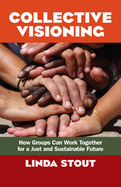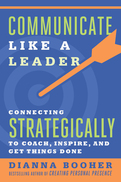2011
-
Shows activists how to develop an inclusive, inspiring vision of the future they want to create
-
Offers a process that guarantees the voices of marginalized people are heard and enables people of all backgrounds to work together with honesty, passion, commitment, and joy
-
Filled with examples and exercises taken from Linda Stout's decades of organizing
All of us want a future that's promising and a way to get there. For decades, activists and community groups have worked to create equitable solutions. Why then are so many of us disappointed at the results?
Despite sincere and well-intentioned efforts, organizers often fall short in creating groups in which people from all backgrounds feel comfortable speaking up. And while progressives are good at articulating what they're against, for a variety of reasons they have a tougher time getting specific about what they're for--creating a positive, energizing vision.
Linda Stout, a lifelong agent of social justice, introduces a process designed to ensure that all voices are heard, an inspiring vision of the future is agreed on, and an action plan is developed that leverages everyone's diverse talents and abilities. Used successfully by over 120 organizations, it creates hope for change among those who've stopped believing change is possible.
Stout lays out the extensive and innovative prework that must be done to build trust and openness before any kind of meeting is held--a distinctive feature of collective visioning. She describes creative approaches for encouraging people to share their histories and most deeply held personal values, and she explains how understanding why each person is drawn to the work is vital in designing action strategies that build on people's particular strengths. She illustrates her points with inspiring stories of what collective vision can accomplish, drawn from her decades of committed activism.
Collective Visioning is a complete guide for leaders seeking to create inclusive movements that work from a place of hope to create a better, more just tomorrow.
2013
Ninety-two percent of all professionals feel overloaded, overwhelmed, and overrun by interruptions, email, and tasks. It's time to fight back and zoom to your goals!
- Discover amazing, easy-to-learn Outlook, iPad, iPhone, Android, and Google tips that will take your performance to the next level
- By the bestselling coauthor of The Hamster Revolution (over 125,000 copies sold)
- Uses an entertaining business fable that makes the tips even more fun to learn
Ninety-two percent of all professionals feel overloaded, overwhelmed, and overrun by interruptions, email, and tasks. Traditional time management concepts no longer work in today's info-intense, 24-7, always-on work environment. People desperately want to zip through tough tasks, jammed in-boxes, and never-ending interruptions, but despite their best efforts, they increasingly fall behind and often fail. It's time to fight back and zoom to your goals!
ZIP! Tips is an express ticket to productivity nirvana. Mike Song shows you that the secret is right at your fingertips-literally. The devices and programs we use every day have shortcuts and features that almost nobody knows about and that can save you hours of time. ZIP! Tips is packed with the very best ways to instantly get more done via the world's most popular technology platforms: Microsoft Outlook, Apple iPads and iPhones, and Google Android and Search, to name a few.
As with his first two bestsellers, Song once again tells the story of Harold, a harassed executive who has been going round and round for so long, he's morphed into a hamster. Desperate, he encounters Z-a productivity superhero who uses his simple, not-so-secret weapon, ZIP!, to help business hamsters regain their humanity.
You'll turn your personal devices into your personal robots, destroy evil time-wasting aliens, and master amazing timesaving tips instantly! ZIP! is rocket fuel for careers and a spa day for the stressed-out soul. And best of all, ZIP! Tips gets the hamster in all of us off the wheel once and for all.
Now updated with 20% new content, including strategies for remote and hybrid workplaces.The bestselling guide on empowering introverted leaders to thrive in an extroverted world.
Now updated with 20% new content, including strategies for remote and hybrid workplaces.
In this expanded third edition of the bestselling The Introverted Leader, Jennifer Kahnweiler equips introverted leaders with essential tools for success in an extrovert-centric business world. With over 120,000 copies sold across multiple languages, this timely update addresses the evolving needs of introverted leaders, including in navigating remote and hybrid work environments such as:
• Navigating the challenges of Zoom calls
• Getting noticed when working remotely
• Applying innovative meeting techniques for engaging introverts
Kahnweiler's proven four-step strategy based on lessons from thousands of introverted leaders-Prepare, Presence, Push, and Practice-provides a concrete framework for introverts to leverage their natural strengths and overcome challenges in key areas such as public speaking, project management, and networking. The book includes:
• Practical applications of the 4 Ps approach in six crucial workplace scenarios
• A new chapter on leading effectively in remote and hybrid spaces
• The “Quiet Wrap-Up Journal” An action-oriented study guide for ongoing development
• Customized hiring and coaching strategies for introverts
Drawing from extensive research and over 100 interviews, Kahnweiler demonstrates how introversion can be a leadership asset, particularly in listening and written communication. This essential guide empowers introverted leaders to embrace their authentic selves while advancing their careers and making meaningful contributions to their organizations.
Joy Wiggins and Kami Anderson advocate that the only way women can successfully support each other is by addressing the varying intersections of our individual power and privileges, particularly focusing on how some privileges are inherited along lines of race, class, sexuality, and geography. When we fully examine how we have power in certain situations and not in others, we start to see where we can lend privilege to create truly inclusive spaces for the historically underrepresented and marginalized.
Wiggins and Anderson look at how the dynamics of privilege and power have played out in the history of the feminist movement and identify and break down socialized behaviors and ideologies that trigger implicit bias and microaggressions. And they provide tools to interrupt negative thoughts and actions so women can nurture mutual support and show up as their authentic selves. Each chapter features a dialogue between them reflecting on how issues of race, privilege, and power have played out in their lives and their friendship.
The system of patriarchy has created an environment for women to knowingly and unknowingly sabotage each other—it is not inherent in women themselves. This book teaches us how to take an active approach to becoming better allies for each other and by so doing improve our world and end the cycle of injustice.
People often get promoted to leadership positions without knowing how to communicate an inspiring strategic vision to the people who report to them. So they focus on what they know: tactics, not strategy. As a result, they become stuck in micromanagement mode.
Dianna Booher wants to prevent micromanagement before it happens by providing you with the right leadership communication skills. Grounded in extensive research, this book offers practical guidelines to help professionals think, coach, converse, speak, write, meet, and negotiate strategically to deliver results. In thirty-six brief chapters, Booher shows you how to communicate effectively to audiences up and down the organization so you can fulfill your most essential responsibilities as a leader.
What if conflicts at home, at work, and in the world stem from the same root cause? What if we systematically misunderstand that cause? And what if, as a result, we unwittingly perpetuate the very problems we think we are trying to solve?
The Anatomy of Peace uses a fictional story of an Arab and a Jew—both of whom lost their fathers at the hands of the other's cousins—to powerfully show readers the way to transform conflict. We learn how they come together, how they help parents and children come together, and how we too can find our way out of the personal, professional, and social conflicts that weigh us down.
The fourth edition includes revisions and new materials and resources that increase its relevance and usefulness at a time of deeply entrenched divisions throughout society. Additionally, it includes new detailed discussions of the pattern of dehumanization that lies at the heart of today's most pressing struggles with prejudice and discrimination—challenges that cannot be solved until the origins of bias and discrimination are properly understood and addressed. The new edition is a unique and vital resource for combatting racism and prejudice in their many manifestations.

















